Wondering what to see in the Jewish Ghetto of Rome? Good question. I talked about visiting the Jewish Ghetto — specifically in terms of when to go, what to expect and what makes its history so fascinating — before. But I didn’t go into exactly what to see in the Jewish Ghetto once you’re there.
The thing is, most people don’t come to Rome’s Jewish Ghetto with a long list of must-see sights in mind. After all, the Jewish Ghetto doesn’t have anything as well-known as, say, the Pantheon or Colosseum or St. Peter’s. Instead, people usually come to soak up the atmosphere, grab a bite to eat and then… carry on their way.
You could do that. But if you want to be a little more organized? Here are my six favorite sights to see in the Jewish Ghetto.
Theatre of Marcellus (Teatro di Marcello)
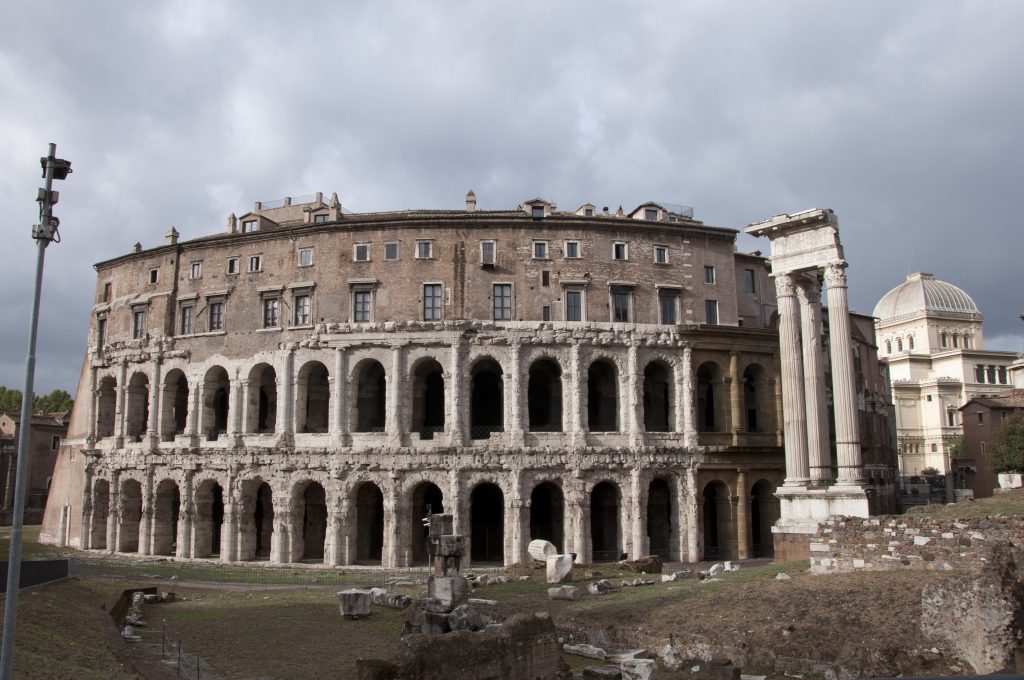
Also known to tourists as “that other Colosseum,” the Theatre of Marcellus is not the same thing as the Colosseum. The Colosseum was the home of vicious gladiatorial combat. The theatre of Marcellus? For plays, concerts and poetic recitals. Despite being more high-brow (and a bit less violent), though, this monument has a history almost as sad as the Colosseum. It was begun by Julius Caesar as a gift to the people (yay!), but left unfinished when Caesar wound up in a pool of blood about five minutes away (boo). Emperor Augustus, Caesar’s successor, finished it and dedicated the theatre in 13 BC to his nephew and son-in-law (noble families preferred to double up wherever possible). He was said to be a stand-up lad, beloved by Augustus, and was slated to be his successor (yay!)… until he fell ill and died at the age of 19 (boo). The theatre remained in use for several hundred years (yay!), until it was largely abandoned and became a quarry for other buildings by the end of the 4th century (boo).
Today, it’s been revived somewhat: People live in apartments on the upper floor (truly), while the sight itself hosts small concerts in the summer. You can’t go in during the day. But you still shouldn’t miss it. (As if you could!).
Portico of Octavia (Portico d’Ottavia)
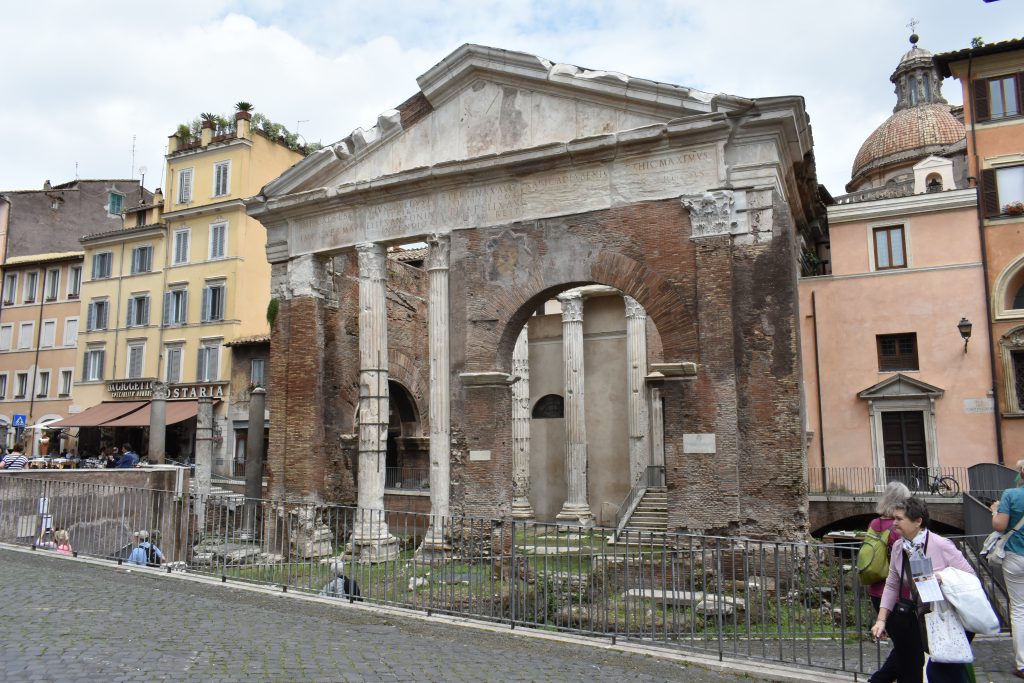
Under scaffolding for ages, the Porticus Octaviae has finally been restored… hurrah! Its size seems impressive now, but when you see it, squint your eyes and try to imagine that these columns kept going: This is actually the fragment of a larger, colonnaded pathway that enclosed the temples of Jupiter Stator and Juno Regina inside. It gets its name from Augustus’s sister, who it was dedicated to around 27 AD. And that brick archway might seem relatively new, but it actually was built in the 5th century, which destroyed the columns that were originally there.
You can walk past the porticus once you pass the Theatre of Marcellus, and in a nice (and rare) touch for Rome, there are some signs with information about the ruins. Across from the portico, make sure to look up at the building. On the wall you’ll se a commemorative plaque in honor of the Jews who were taken by Nazis from here in 1943 and sent to concentration camps, never to return.
The Great Synagogue
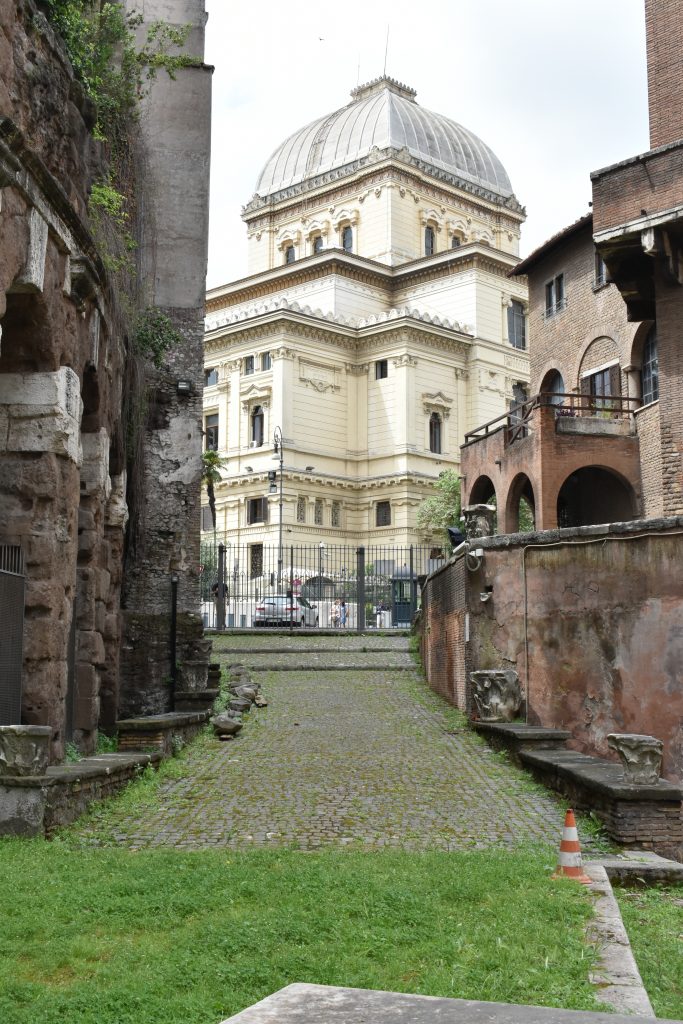
This one is obvious… sorry. But! It’s also one of the biggest draws of the quarter. Rome’s Jewish Ghetto has a storied, and tragic, history. Although Jews have lived in Rome for 2,200 years — making it the longest continuously inhabited Jewish settlement in the world — the Ghetto is newer. It dates back to 1555, when it was walled off by the Pope. (To add insult to injury, Rome’s Jews were made to pay for the wall’s construction). In 1870, with the Unification of Italy, Jews were made citizens for the first time and the wall was demolished. The synagogue was built soon after, making it not only the quarter’s spiritual center but a symbol of hope and equality.
As well as attending services here, you can visit the museum, which has a small exhibition devoted to Rome’s Jewish history.
Piazza Mattei and the Turtle Fountain (Fontana delle Tartarughe)
There are dozens of fountains in Rome. But Piazza Mattei’s Turtle Fountain might just be the city’s most beloved. Built by the famous architect Giacomo della Porta in the 1580s, it features boys holding up bronze turtles (the turtles were added later, possibly by Bernini). The boys were once naked… but got fig leafed in the 1850s. The fountain is charming (if a bit odd). But I prefer what’s around the corner…
Palazzo Mattei
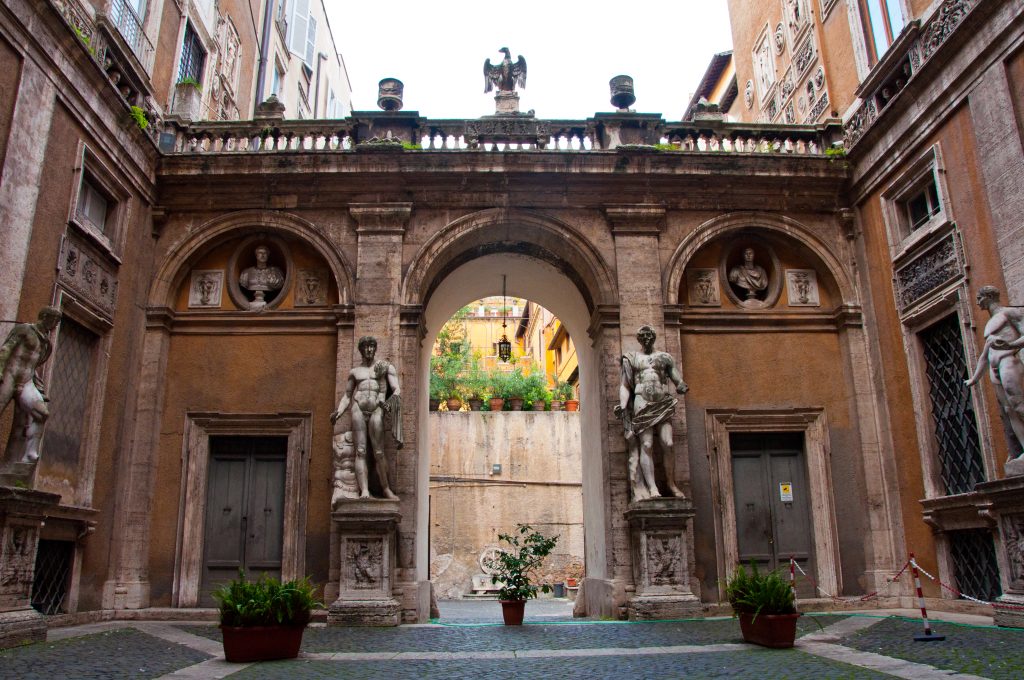
Once, this part of the Ghetto was made up of five different homes, all belonging to the Mattei family. The last one, built in the early 1600s, was Palazzo Mattei. Designed by none other than Carlo Maderno, it’s a Baroque layer cake of bas-reliefs, ancient statues, arches and stunning staircases. As well as the Matteis — a powerful patrician family — the painter Caravaggio lived here in 1601 (one of the Matteis was his patron at the time).
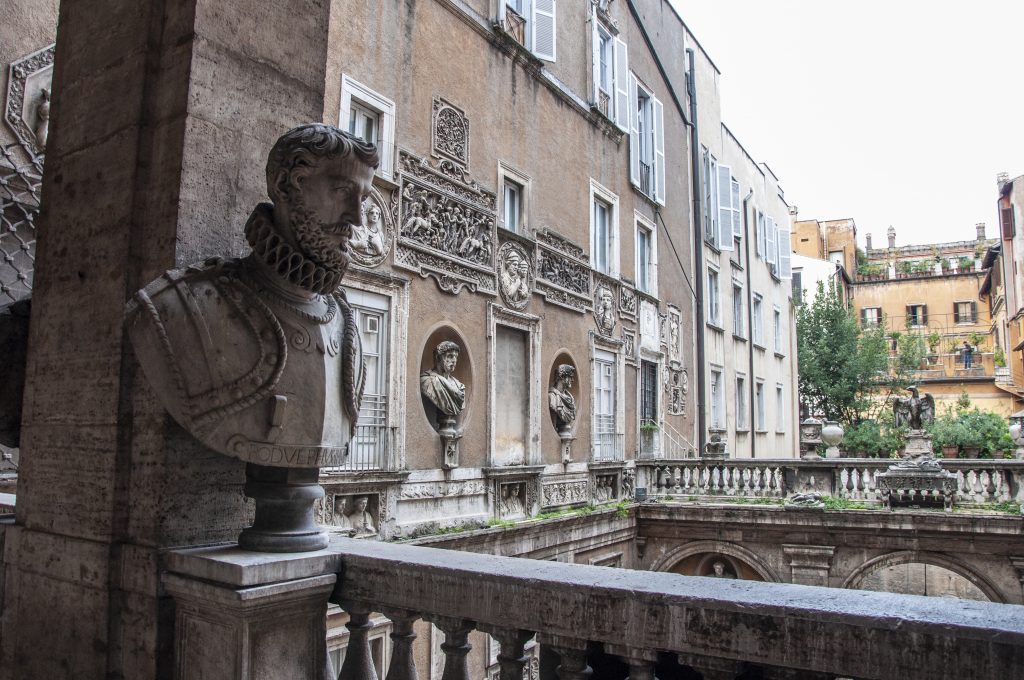
The best part about it? You can walk in to the courtyards to get a glimpse. (You can even sneak inside, if you promise to behave). That’s because a variety of cultural institutions are now based here. One is the Italian Centre for American Studies, which has a library of about 50,000 books. (Pro tip: For 50 euros a year, you can join the library. This means being able to take out books in English as well as being allowed to work in the stunning rooms, still with 17th-century frescoes. Seriously one of my highlights of living in Rome!).


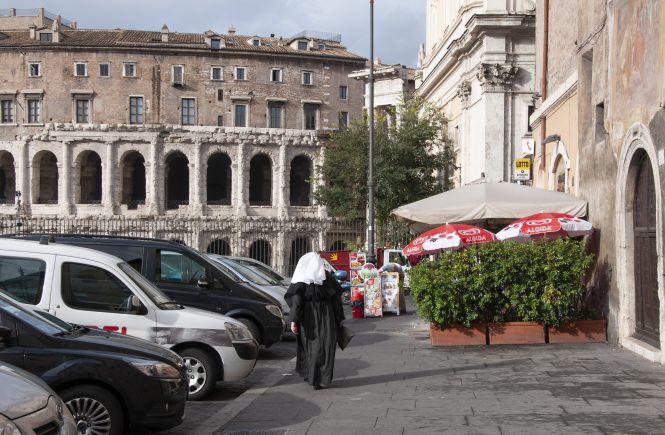

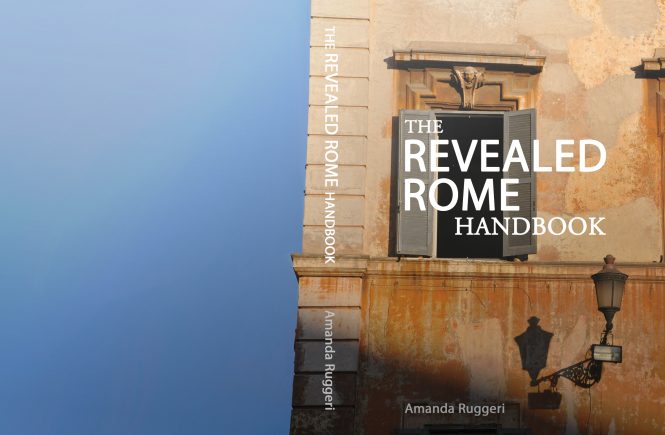
3 comments
A friend sent me this blog post when I was on a train on my way back to Rome with my daughter. We used you blog like a fun scavenger hunt to find your 6 favorite last in the Jewish Ghetto. It was such fun to find each treasure!! I took pics of each and guess what? That motorino was not there this time, in front of the ancient column! Thanks for the fun!
I’m so glad you enjoyed!